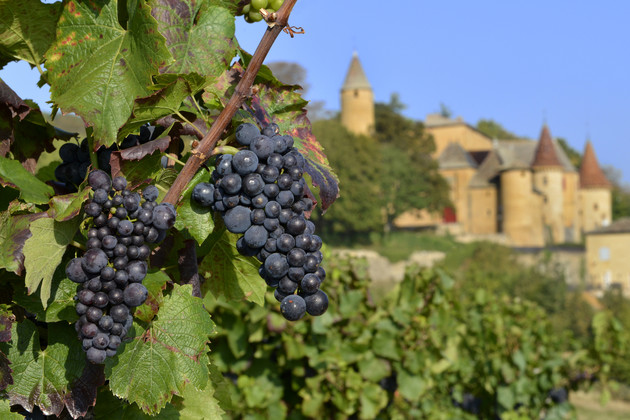
‘Nouvelle generation’ to drive Beaujolais export potential
With good recent vintages to its name and wines that sit squarely with the modern trend towards fresher, lighter styles, Beaujolais certainly appears to be well placed to capture the attention of a new generation of drinkers. Add in ‘ownership’ of Gamay, a distinctive and easy-to-like variety, and the region also offers a sense of discovery (or re-discovery for older drinkers) in a world awash with international grapes.
The recent Beaujolais Nouvelle Generation virtual tasting pressed this point home. The overview and tasting flights focused variously on the region and its exports, the newer generation of winemakers – men and women – that are now shaping the region, including its growing sustainability, and the diversity born of such varied terroir, altitudes and vineyard aspects.
So far, so recognisable for any wine territory looking to parade its credentials in today’s crowded wine world.
But Beaujolais, buoyed by a recent return to fashion in key markets such as the UK and elsewhere – and with the early release Nouveau wines connecting with a new round imbibers in an otherwise fun-restricted pandemic world – has found a new confidence as to its place in the wine world.
Some 60% of the wines are consumed in France, with 40% currently heading beyond French borders. This, though, is ripe for change, according to
Cécile Bossan-Redon, MD at Inter Beaujolais.
“We have big possibilities in the export markets, we are not at the maximum at all,” she tells Harpers.
Describing the UK, followed by markets such as Belgium, Netherlands and Sweden, as “strong”, but set against troubles in the traditionally healthy US market down to the 25% “Trump tax” on French wine imports, Bossan-Redon believes that further growth in the West and elsewhere will be driven primarily by change within the Beaujolais region. And that change centres on an evolution in the winemakers and winemaking/viticultural techniques that are coming to the fore.
Bossan-Redon alludes to “three challenges” in the next 10 years. This includes the advancement of an “ecological transition” in the vineyards, with a younger generation driving greater sustainability, but while having to achieve this without the high prices achievable in places such as Bordeaux or Champagne.
The second concerns the structure of the industry in Beaujolais. “We have a lot of small wineries and winemakers, but don’t really have big names, well known on the international markets,” says Bossan-Redon.
The third relates to production costs, with many of the top crus wines on difficult to work slopes and featuring low-yielding older vines, while the vines on flatter sites would benefit from greater efficiencies, such as mechanical harvesting.
Nonetheless, the ‘nouvelle’ or new generation of winemakers, says Bossan-Redon, are making great strides in shaping the future.
“This will happen because of the vision of the winemakers, they are arriving in Beaujolais because they want to create a style of wine, the region is close to cities and nice to live in, land is very affordable, and they want to work with [Gamay], which is fantastic, and there is also the Chardonnay.”
Part of this new drive involves Beaujolais Nouveau, but “made in a new style”, along with – crucially, for the advancement of the quality perception of the region – a renewed emphasis on site, on the diversity and terroir that this multifaceted landscape offers.
Many of this newer influx of vignerons, with perhaps six to 10 hectares of vines, are also keen to develop export markets for their wines, and so have expanded into the negociant side of the business, allowing for greater flexibility, including expanding their range to other crus and styles.
“They realise that if they want to export, you have to have a strategy, and you also have to have the volume to go on the export market, because you cannot do that with 3,000 bottle a year – it’s impossible.”
It all adds up to a fascinating and evolving scene, with renewed (and often youthful) energy driving Beaujolais’ export ambitions, but also one anchored in a focus on quality and modern winemaking understanding.
Bossan-Redon concludes by describing the new face of Beaujolais as “Nouveau Grand Vin”, suggesting wines that hit the quality spot, but can be drunk young, fresh and lively, to enjoy in the moment.
“[Winemakers] here are making wine because they want to see people sharing a table, sharing a meal and sharing their wine. They are not making wines to keep in the cellar, with lots of oak, at crazy prices, they want people to drink the wine… this is the strategy of Beaujolais.”
Keywords:
- wine
- new
- UK
- US
- export
- Wines
- winemakers
- region
- MD
- markets
- Beaujolais
- wine world
- bossan
- redon
- bossan redon
- export markets
- new generation
- says bossan
- says bossan redon
- mechanical harvesting nonetheless
- featuring low yielding
- low yielding older
- yielding older vines





